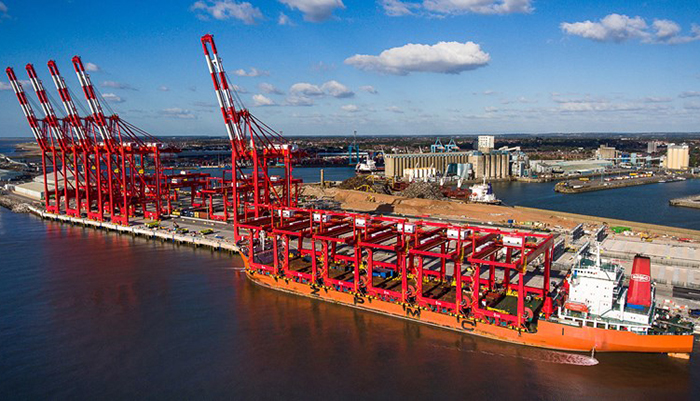This year’s Northern Transport Summit, which takes place today, will be taking a close look at the rail, road, air and port infrastructure in the North of England and the current challenges facing these vastly different modes of transport for businesses and the public.
As a port operator, we play a crucial enabling role in the success of countless businesses in the region and beyond. The same applies to the wider transport network, without which it would be impossible to move the people and goods efficiently as part of a competitive and flourishing local economy.
In the panel session that I’m taking part in, my main argument will highlight the importance of investment and the notion that one good turn leads to another. In other words, when Government puts its support and finance behind critical infrastructure projects, industry invariably returns the favour, innovating and investing in its turn. That’s going to be essential if we can cultivate the capacity and capabilities that we need in the north to further develop the region as a commercial hub where people want to do business.
Sometimes this pattern of mutually beneficial investment happens the other way around.
At the Port of Liverpool we took the bold move of opening up a £400m container terminal to drive trade through the north. A large part of the proposition for Liverpool2 is about the multimodal transport links – road, rail and canal – that directly connect the terminal with the rest of the North-west. This is vital for creating cargo journeys that are efficient, sustainable and reliable.
A further example of our commitment is the Heysham - M6 Link, which following a £140 million investment in road connectivity by DfT and Lancashire County Council Peel Ports have now completed their original £25 million investment programme and Seatruck Ferries have invested £88 million in new higher capacity ro-ro ferries.
Many people already know about our ‘green highway’ of the Manchester Ship Canal and the road connections from the port. Rail is one area that has been in the shadows a bit though, until we recently launched a new freight service that improves our ability to ship cargo beyond our natural hinterland while also reducing costs, congestion and carbon emissions for our customers.
The fulfilment of this promise in the long-term, and the overall success of the business community that we serve, is underpinned by the provision of sound transport infrastructure in the broader region.
As Transport for the North’s £70bn plans to overhaul transport across the north of England progress, we need to make our voices heard at Government level – as it is here where decisions will be made.
We’ve been presented with a great opportunity for the region to modernise an outmoded transport strategy, bringing customers innovative multimodal connectivity. L2 was our first step in investing for the future, and we must continue to push for government investment in further regional progression.
The largest customer of Liverpool2, the Mediterranean Shipping Company (MSC) has equally invested heavily in local services, channelling over £3 billion into Liverpool, providing customers with weekly services to key shipping locations and onward destinations across the world, and is exploring the opportunities presented by the Liverpool2 upgrades.
This goes to show that if the infrastructure is there, valuable customers will continue to support the region. And that in turn will allow us to truly act as an economic counter-balance to London and the South-east.



Comments
Post a Comment